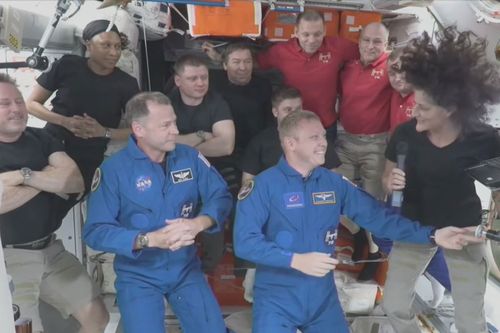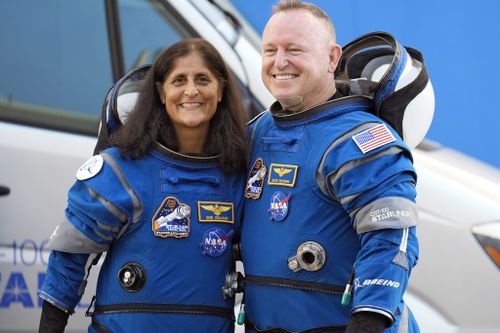The SpaceX Crew Dragon capsule, chosen by NASA to carry astronauts Suni Williams and Butch Wilmore back to Earth after their Starliner spacecraft was deemed too risky for crew, has arrived at the space station.
The vehicle, on a mission called Crew-9, docked at the ISS at about 5:30 p.m. ET Sunday.

On board the SpaceX vehicle were NASA astronaut Nick Hague and Russian cosmonaut Aleksandr Gorbunov.
Alongside them were two empty seats, saved for Williams and Wilmore to occupy when the group returns to Earth next year.
The capsule’s hatch opened at about 7:04 p.m. ET, allowing Hague and Gorbunov to enter the space station.
A welcome ceremony with Hague, Gorbunov, Williams, Wilmore and the other seven crew members currently on board the orbiting laboratory took place shortly after.
Hague and Gorbunov launched aboard the Crew Dragon on Saturday afternoon from Cape Canaveral Space Force Station in Florida.

Though they reached their intended orbit without a hitch, SpaceX later revealed that the second stage, or upper portion, of the Falcon 9 rocket that powered the first part of their journey experienced an issue after it broke away from the capsule.
“As a result, the second stage safely landed in the ocean, but outside of the targeted area.”
SpaceX indicated it would pause flights using Falcon 9 – the world’s most frequently launched rocket – as it explored the anomaly.
“We will resume launching after we better understand root cause,” the company said in the X post.
CNN has reached out to the Federal Aviation Administration for comment.
Together, Hague, Williams, Wilmore and Gorbunov will complete SpaceX’s Crew-9 team.
Williams and Wilmore first traveled to the International Space Station in early June aboard a Boeing Starliner spacecraft for what was expected to be a weeklong test mission.
But issues with helium leaks and malfunctioning thrusters left engineers scrambling to figure out what went wrong – and NASA ultimately decided the Starliner’s problems were not well enough understood for the space agency to allow Williams and Wilmore back on board.

The Starliner instead flew home empty on September 6.
But that meant Williams and Wilmore would have to fulfill the duties of the original Crew-9 staff, taking up months’ worth of routine work on the space station before their return trip.

Rare hypervelocity star may be able to escape the Milky Way
Space agency officials said spacecraft availability and ISS needs played a role in the decision to keep Williams and Wilmore in space for a full crew rotation rather than bringing them back to Earth sooner.
“We talked a lot about what to do in terms of when to rotate them back down,” said Steve Stich, NASA’s Commercial Crew Program manager, in news conference on Friday.
“When we look at the vehicles that we have ready – and the flights – it just made a lot of sense to rotate them back down with Crew-9 and have the two empty seats. Obviously the Crew-8 vehicle wasn’t the right time to bring them back down.”

He added that NASA’s next mission to the space station will involve a new capsule.
“We could schedule it a little shorter, but we’d have to have another vehicle ready. So when we worked with SpaceX, that next vehicle for Crew-10 that’s going to be in the February time frame, that’s a brand-new Dragon we’re trying to get ready,” Stich said.
“We’d like to fly that Dragon and space out the flights across the Dragons. And so really that’s the reason we’ll just keep Butch and Suni there a little longer.”
Both Williams and Wilmore – veterans of earlier missions to the space station – have said they easily adjusted to the idea of staying in space until next year, with Williams noting the microgravity environment is her “happy place.”
Rounding out the staff currently on board the International Space Station are NASA’s Don Pettit and Aleksey Ovchinin and Ivan Vagner of the Russian space agency Roscosmos.
The three arrived at the space station aboard a Russian Soyuz vehicle on September 11.
Pettit and Gorbunov rode aboard spacecraft developed outside their home countries as part of a seat-swapping agreement between NASA and its Russian counterpart.








